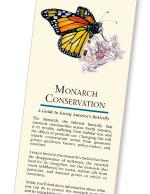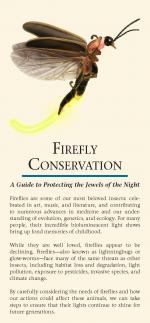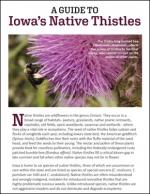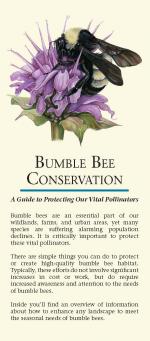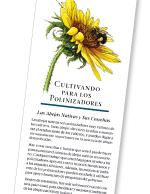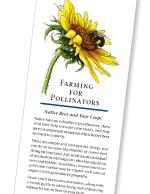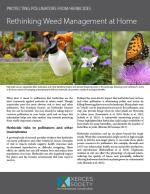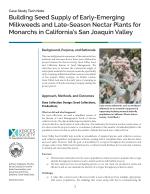As a science-based organization, the Xerces Society produces dozens of publications annually, all of which employ the best available research to guide effective conservation efforts. Our publications range from guidelines for land managers, to brochures offering overviews of key concepts related to invertebrate conservation, from books about supporting pollinators in farmland, to region-specific plant lists. We hope that whatever you are seeking—whether it's guidance on making a home or community garden pollinator-friendly, advice on developing a local pesticide reduction strategy, or detailed information on restoring habitat—you will find it here!
Find Publications
Use the search functions to sort by publication type (books, guidelines, fact sheets, etc.), location, and/or subject (agriculture, gardens, pollinators, pesticides, etc.).
A Guide to Saving America’s Butterfly
This brochure contains information about how to enhance any landscape to help meet the seasonal needs of monarchs.
Fireflies are some of our most beloved insects: celebrated in art, music, and literature, and contributing to numerous advances in medicine and our understanding of evolution, genetics, and ecology. For many people, their incredible bioluminescent light shows bring up fond memories of childhood. By carefully considering the needs of fireflies and how our actions could affect these animals, we can take steps to ensure that their lights continue to shine for future generations.
Native thistles are wildflowers within the genus Cirsium. They occur in a broad range of habitats—pastures, grasslands, prairie remnants, roadsides, idle fields, open woodlands, savannas and wetlands—where they play a vital role in ecosystems. This brochure describes native and non-native thistles and provides guidance on recognizing the different species and their distinct features.
A Guide to Protecting Our Vital Pollinators
Bumble bees are an essential part of our wildlands, farms, and urban areas, yet many species are suffering alarming population declines. It is critically important to protect these vital pollinators.
There are simple things you can do to protect or create high-quality bumble bee habitat. Typically, these efforts do not involve significant increases in cost or work, but do require increased awareness and attention to the needs of bumble bees.
This brochure offers an overview of information about how to enhance any landscape to meet the seasonal needs of bumble bees.
Habitat for Predators and Parasites
This brochure illustrates how farmers can attract and retain helpful predators and parasites by providing some of the key resources that they require.
Las Abejas Nativas y Sus Cosechas
A Spanish translation of the brochure Farming for Pollinators.
Este folleto proporciona un resumen de los requisitos de hábitat de los polinizadores de cultivos y su hábitat se puede encontrar en el área alrededor de una granja.
To see the full list of brochures available for download, click here.
Native Bees and Your Crops
This brochure provides a summary of the habitat requirements of crop pollinators and where their habitat may be found in the area around a farm.
To see the full list of brochures available for download, click here.
Guidelines for Planning, Preparation, Design, Installation, and Maintenance
Native meadows, filled with perennial wildflower mosaics and waving grasses, are growing in popularity with property owners and designers because they provide benefits to people, pollinators, and wildlife while demonstrating sustainability values. These meadowscapes offer economic and ecological advantages over intensively managed horticultural landscapes. Seeded meadows are low-input alternatives to containerized plantings or certain turf spaces, and so they have a role to play in institutional, commercial, and multifamily residential projects.
Printable Yard Sign
Join us as we participate in No Mow May! By leaving your property unmown for the month of May, you’re creating habitat for pollinators and other wildlife.
This document provides a visual overview of the Xerces Society's work with private sector partners to plan, install, and develop maintenance plans for pollinator habitat sites at facilities, offices, on supply chains, and more; as well as to help farms become Bee Better Certified.

